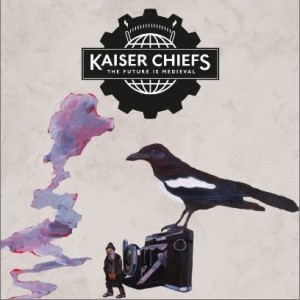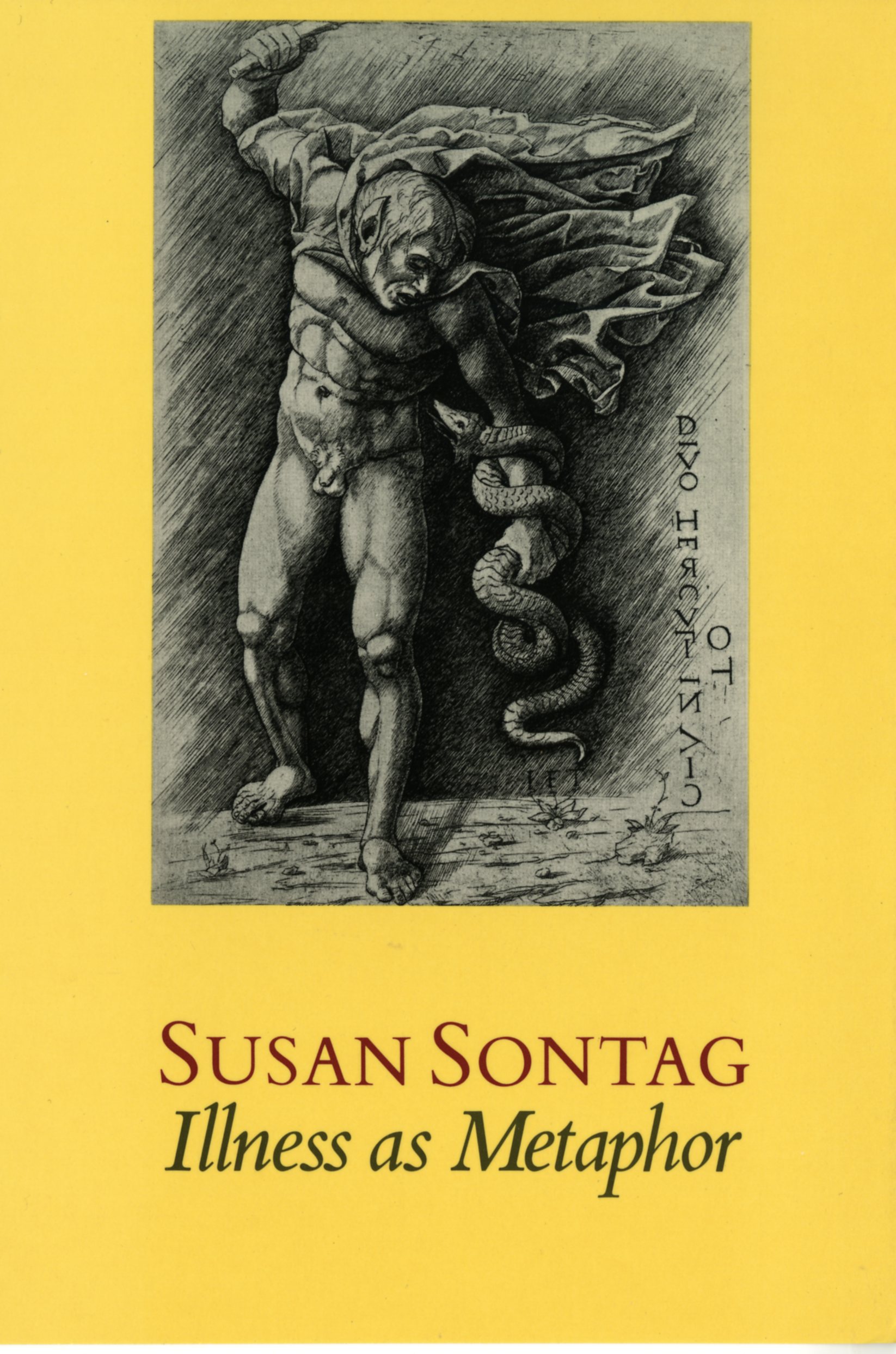-
Gallery of Images:

-
In the view of the cultural critic Susan Sontag, however, metaphorizing illness and perhaps more importantly using illness as a metaphor can have damaging consequences for those afflicted. In her pair of related essays, Illness as a Metaphor and AIDS and its Metaphors, Susan Sontag reveals many of the metaphors surrounding such influential. Illness as Metaphor AIDS and its Metaphors Illness as Metaphor was first published in 1978, since when the worldwide epidemic of AIDS has taken first place in the catalogue of diseases to which humans have been exposed. In AIDS and Its Metaphors, which serves as a fine companion to Illness As A Metaphor, Sontag takes up the specific case of AIDS. AIDS and Its Metaphors was published in 1988, while Illness as a Metaphor was published ten years earlier, before the emergence of AIDS into the global conscious. cancer1 Her examples of metaphors and images of illness are taken from medical Illness as Metaphor FILMSCRIPTS Duet for Cannibals Brother Carl. Illness as Metaphor SUSAK SONTAG My point is that illness is not a metaphor, and that the These two essays now published together, Illness as Metaphor and AIDS and Its Metaphors, have been translated into many languages and continue to have an enormous influence on the thinking of medical professionals and, above all, on the lives of many thousands of patients and caregivers. AIDS and Its Metaphors extends her critique of cancer metaphors to the metaphors of dread surrounding the AIDS virus. Taken together, the two essays are an exemplary demonstration of the power of the intellect in the face of the lethal metaphors of fear. 15 quotes from Illness as Metaphor AIDS and Its Metaphors: A large part of the popularity and persuasiveness of psychology comes from its being a subl In l978 Sontag wrote Illness As Metaphor. A cancer patient herself at the time, she shows how the metaphors and myths surrounding certain illnesses, especially cancer, add greatly to the suffering of the patients and often inhibit them from seeking proper treatment. Illness as Metaphor and AIDS and Its Metaphors Ebook written by Susan Sontag. Read this book using Google Play Books app on your PC, android, iOS devices. Download for offline reading, highlight, bookmark or take notes while you read Illness as Metaphor and AIDS and Its Metaphors. Illness as Metaphor, a book of social criticism by critic and novelist Susan Sontag, is an analysis of how people make meaning of disease and how those meanings can be detrimental. (Illness as Metaphor and AIDS and Its Metaphors, p. ) She has particular contempt for any psychological theory that suggests the existence of a cancer personality or the tendency of some personality types to be more prone to developing cancer. AIDS and Its Metaphors extends her critique of cancer metaphors to the metaphors of dread surrounding the AIDS virus. Taken together, the two essays are an exemplary demonstration of the power of the intellect in the face of the lethal metaphors of fear. In AIDS and Its Metaphors, which serves as a fine companion to Illness As A Metaphor, Sontag takes up the specific case of AIDS. AIDS and Its Metaphors was published in 1988, while Illness as a Metaphor was published ten years earlier, before the emergence of AIDS into the global conscious. These two essays now published together, Illness as Metaphor and AIDS and Its Metaphors, have been translated into many languages and continue to have an enormous influence on the thinking of medical professional and, above all, on the lives of many thousands of patients and caregivers. In 1978 Susan Sontag wrote Illness as Metaphor, a classic work described by Newsweek as one of the most liberating books of its time. A cancer patient herself when she was writing the book, Sontag shows how the metaphors and myths surrounding certain illnesses, especially cancer, add greatly to the suffering of patients and often inhibit them from seeking proper treatment. Sontag wrote Illness as Metaphor in 1978, while suffering from breast cancer herself. In her study she reveals that the metaphors and myths surrounding certain illnesses, especially cancer, add greatly to the suffering of the patients and often inhibit them from seeking proper treatment. AIDS and its metaphors lacks the thoroughness and inquisitiveness of Illness as metaphor. In the former, the author seems to be almost dogmatic, whereas in the. AIDS and Its Metaphors: Illness as Metaphor is a 1978 work of critical theory by Susan Sontag, in which she challenges the victimblaming in the language often used to describe diseases and those who suffer from them. Teasing out the similarities between public perspectives on cancer. Almost a decade later, with the outbreak of a new, stigmatized disease replete with mystifications and punitive metaphors, Sontag wrote a sequel to Illness as Metaphor, extending the argument of the earlier book to the AIDS pandemic. These two essays now published together, Illness as Metaphor and AIDS and Its Metaphors, have been translated. illness as metaphor and aids and its metaphors Download illness as metaphor and aids and its metaphors or read online here in PDF or EPUB. Please click button to get illness as metaphor and aids and its metaphors book now. All books are in clear copy here. Susan Sontag was born in Manhattan in 1933 and studied at the universities of Chicago, Harvard and Oxford. Her nonfiction works include Against Interpretation, On Photography, Illness as Metaphor, AIDS and its Metaphors and Regarding the Pain of Others. In AIDS and Its Metaphors, which serves as a fine companion to Illness As A Metaphor, Sontag takes up the specific case of AIDS. AIDS and Its Metaphors was published in 1988, while Illness as a Metaphor was published ten years earlier, before the emergence of AIDS into the global conscious. Illness as Metaphor and AIDS and Its Metaphors y ms de 950. 000 libros estn disponibles para Amazon Kindle. 000 libros estn disponibles para Amazon Kindle. The idea behind both Illness as Metaphor and AIDS and Its Metaphors is that societys response to diseases that it does not yet understand is to construct fantasies about them. Illness as Metaphor and AIDS and its Metaphors on the assumption that the illness may be a secret from their families. Since getting cancer can be a scandal that jeopardizes one's love life, one's chance of promotion, even one's job, patients who know what they have tend to be extremely prudish, if not outright secretive, about their. It is not uncommon for people to write about their experience of experience. After the US writer Susan Sontag underwent chemotherapy for breast cancer, however, she took a different approach. Illness as Metaphor examines in more general than personal terms how society regards illness and being ill. Susan Sontag was born in Manhattan in 1933 and studied at the universities of Chicago, Harvard and Oxford. Her nonfiction works include Against Interpretation, On Photography, Illness as Metaphor, AIDS and its Metaphors and Regarding the Pain of Others. AIDS brings together two powerful metaphors about illness. First, AIDS develops further the theme (seen earlier in cancer) of disease as invader: the enemy invades and destroys you from within. Thus, AIDS strengthens the use of military metaphors in medicine. These two essays now published together, Illness as Metaphor and AIDS and Its Metaphors, have been translated into many languages and continue to have an enormous influence on the thinking of medical professionals and, above all, on the lives of many thousands of patients and caregivers. In AIDS and Its Metaphors, which serves as a fine companion to Illness As A Metaphor, Sontag takes up the specific case of AIDS. AIDS and Its Metaphors was published in 1988, while Illness as a Metaphor was published ten years earlier, before the emergence of AIDS into the global conscious. It is not uncommon for people to write about their experience of experience. After the US writer Susan Sontag underwent chemotherapy for breast cancer, however, she took a different approach. Illness as Metaphor examines in more general than personal terms how society regards illness and being ill. Buy Illness As Metaphor And AIDS And Its Metaphors by Susan Sontag (ISBN: ) from Amazon's Book Store. Everyday low prices and free delivery on eligible orders. In 1978 Susan Sontag wrote Illness as Metaphor, a classic work described by Newsweek as one of the most liberating books of its time. A cancer patient herself when she was writing the book, Sontag shows how the metaphors and myths surrounding certain illnesses, especially cancer, add. Praise for Illness as Metaphor and AIDS and Its Metaphors Susan Sontag's Illness as Metaphor was the first to point out the accusatory side of the metaphors of empowerment that seek to enlist the patient's will to resist disease. In AIDS and Its Metaphors, which serves as a fine companion to Illness As A Metaphor, Sontag takes up the specific case of AIDS. AIDS and Its Metaphors was published in 1988, while Illness as a Metaphor was published ten years earlier, before the emergence of AIDS into the global conscious. com: Illness as Metaphor and AIDS and Its Metaphors ( ) by Susan Sontag and a great selection of similar New, Used and Collectible Books available now at great prices. These two essays now published together, Illness as Metaphor and AIDS and Its Metaphors, have been translated into many languages and continue to have an enormous influence on the thinking of medical professionals and, above all, on the lives of many thousands of patients and caregivers. Furthermore, metaphors concerning illness and disease function to be directed at either the individual or the society as a whole. For instance, the term plague is the primary metaphor by which the AIDS epidemic is conceived. These two essays now published together, Illness as Metaphor and AIDS and Its Metaphors, have been translated into many languages and continue to have an enormous influence on the thinking of medical professionals and, above all, on the lives of many thousands of patients and caregivers. AIDS and Its Metaphors (a continuation of Illness as Metaphor), 1988 File history. Click on a datetime to view the file as it appeared at that time. DateTime Dimensions User Comment; current: 08: 37, 21 December 2013 (1. 15 MB) Sorindanut (Talk contribs) Almost a decade later, with the outbreak of a new, stigmatized disease replete with mystifications and punitive metaphors, Sontag wrote a sequel to Illness as Metaphor, extending the argument of the earlier book to the AIDS pandemic. These two essays now published together, Illness as Metaphor and AIDS and Its Metaphors, have been translated. In 1978 Susan Sontag wrote Illness as Metaphor, a classic work described by Newsweek as one of the most liberating books of its time. A cancer patient herself when she was writing the book, Sontag shows how the metaphors and myths surrounding certain illnesses, especially cancer, add greatly to the suffering of patients and often inhibit them from seeking proper treatment. Almost a decade later, with the outbreak of a new, stigmatized disease replete with mystifications and punitive metaphors, Sontag wrote a sequel to Illness as Metaphor, extending the argument of the earlier book to the AIDS pandemic. These two essays now published together, Illness as Metaphor and AIDS and Its Metaphors, have been translated. Leia Illness as Metaphor and AIDS and Its Metaphors de Susan Sontag com a Rakuten Kobo. In l978 Sontag wrote Illness As Metaphor. In l978 Susan Sontag wrote Illness as Metaphor, a classic work described by Newsweek as one of the most liberating books of its time. A cancer patient herself when she was writing the book, Sontag shows how the metaphors and myths surrounding certain illnesses, especially cancer, add greatly to the suffering of the patients and often inhibit them from seeking proper treatment. Illness as metaphor is a luminous, great text on the way we think and talk about disease (TB and cancer in particular), and the Romantic era ideas about illness we still very much believe in. Compared to it, AIDS and its metaphors, written 10 years later, felt like an overly long, updated footnote, somewhat lacking in spark, but the first.
-
Related Images:

/thumb.jpg)









